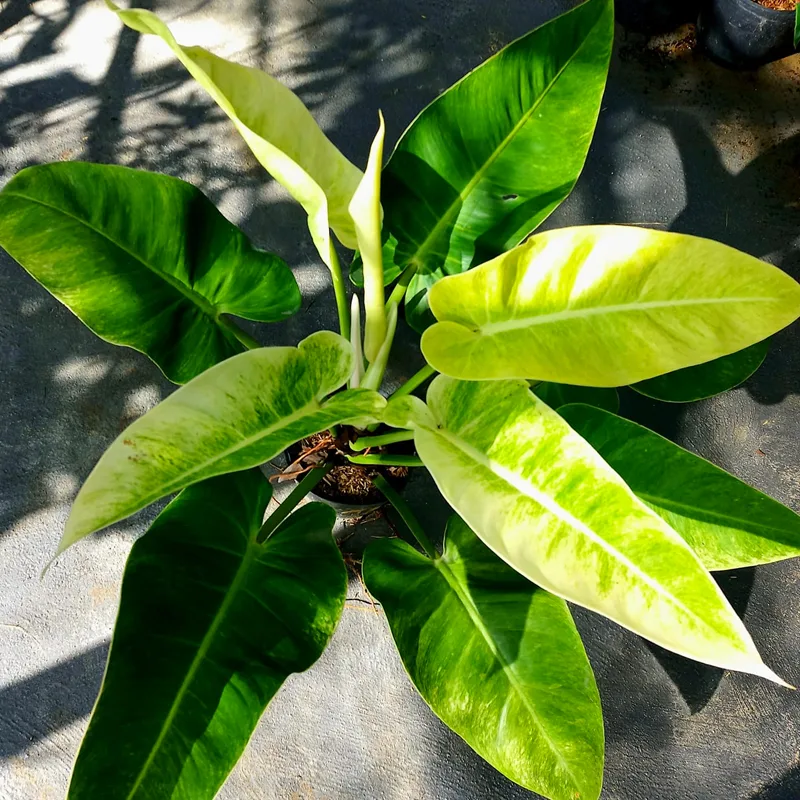
Alocasia Tigrina: The Zebra-Striped Jewel for Plant Enthusiasts
Hi, Ferb Vu here, and today we’re diving into the world of the stunning Alocasia Tigrina. This architectural wonder isn’t just another pretty face; it boasts captivating features and a personality that thrives in the right environment.
Whether you’re a seasoned plant parent or a curious newbie, this FAQ will equip you with everything you need to know about caring for your very own Alocasia Tigrina.
90 Species in Genus Alocasia – Elephant Ears
What is an Alocasia Tigrina?
The Alocasia Tigrina, also known as the Tiger Stripe Alocasia or Narrow-Leaf Elephant Ear, is a tropical wonder native to Southeast Asia. It belongs to the Araceae family, sharing kinship with popular houseplants like Philodendron and Monstera.
The Tigrina’s defining characteristic is its mesmerizing foliage. Imagine glossy, deep green, arrow-shaped leaves reaching for the sky, accented by prominent veins. But the true showstopper lies in the petioles, or stems. These beauties are adorned with striking black and yellow stripes, resembling a tiger’s fur – hence the name “Tigrina.”
Mature Alocasia Tigrinas can reach a height of 3-4 feet, making them a captivating focal point in any room.
Alocasia Tigrina vs Zebrina
The Alocasia Tigrina is often confused with its close cousin, the Alocasia Zebrina. Both boast stunning zebra-patterned petioles and lush foliage. However, there are subtle yet significant differences:
- Leaves: The Tigrina has narrower, more elongated leaves with a pronounced pointed tip. The Zebrina’s leaves tend to be wider and more oval-shaped.
- Petiole Pattern: The Tigrina’s stripes are generally more defined and contrasting, with bolder black against a bright yellow background. The Zebrina’s stripes can be slightly fainter and sometimes have a greenish tinge.
- Growth Habit: The Tigrina has a more upright growth pattern, while the Zebrina can be bushier and spread wider.
Ultimately, both the Tigrina and Zebrina are fantastic additions to your plant collection. Choosing between them depends on your preference for leaf shape and overall plant architecture.
How to care for Alocasia Tigrina?
The Alocasia Tigrina thrives in a warm, humid environment that mimics its tropical origins. Here’s how to ensure your Tigrina flourishes:
- Light: Provide bright, indirect sunlight. Avoid harsh, direct sun, which can scorch the leaves.
- Water: Water thoroughly when the top inch of soil feels dry to the touch. Allow excess water to drain freely to prevent root rot. Maintain consistent moisture, but avoid soggy soil.
- Humidity: Aim for moderate to high humidity levels (around 50-60%). Misting regularly or using a humidifier can be beneficial.
- Temperature: Maintain a comfortable room temperature between 65-80°F (18-27°C). Avoid sudden temperature fluctuations.
- Soil: Use a well-draining, airy potting mix specifically formulated for aroids. You can create your own by combining potting soil with perlite or orchid bark for added drainage.
- Fertilizer: During the growing season (spring and summer), fertilize your Alocasia Tigrina with a balanced liquid fertilizer diluted to half strength once a month. Withhold fertilizer during winter.
Common Alocasia Tigrina Problems and Solutions
Even with the best care, your Alocasia Tigrina might encounter some challenges. Here’s how to identify and address them:
- Yellowing Leaves: This can be caused by underwatering, overwatering, or lack of light. Adjust your watering schedule and ensure sufficient indirect light.
- Brown Leaf Tips: This could be due to low humidity, excessive fertilizer use, or mineral build-up from tap water. Increase humidity, flush the soil with clean water occasionally, and consider using filtered water.
- Drooping Leaves: This often indicates underwatering. Water your plant thoroughly when the soil feels dry.
- Pests and Diseases: Alocasia Tigrina can be susceptible to mealybugs, spider mites, and fungal diseases. Regularly inspect your plant and treat infestations promptly with insecticidal soap or neem oil. For fungal issues, isolate the plant and adjust your watering practices to prevent further problems.
By keeping an eye on these potential issues, you can ensure your Alocasia Tigrina stays healthy and vibrant.
Conclusion: The Allure of the Alocasia Tigrina
For those seeking a challenge, the Alocasia Tigrina can be propagated! While not the easiest process, successfully multiplying your Tigrina brings immense satisfaction. You can attempt division, where you carefully separate established clumps into individual plants. Alternatively, try corms (underground bulbs) – detach healthy corms from a mature plant and pot them individually in a well-draining mix. Patience is key, as new growth might take several weeks to emerge.
So, whether you’re a seasoned plant collector or a curious beginner, the Alocasia Tigrina offers a rewarding experience. With its stunning foliage, captivating stripes, and manageable care requirements, this tropical gem is sure to become a treasured addition to your indoor jungle.
If i die, water my plants!



